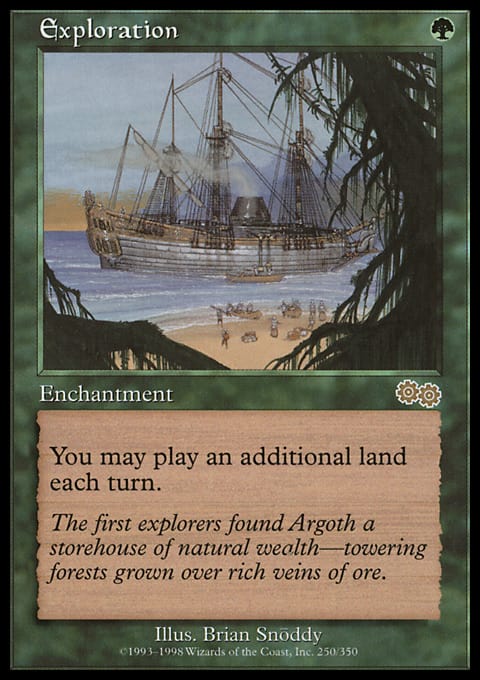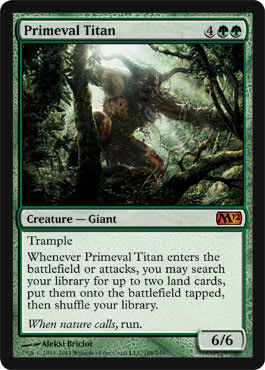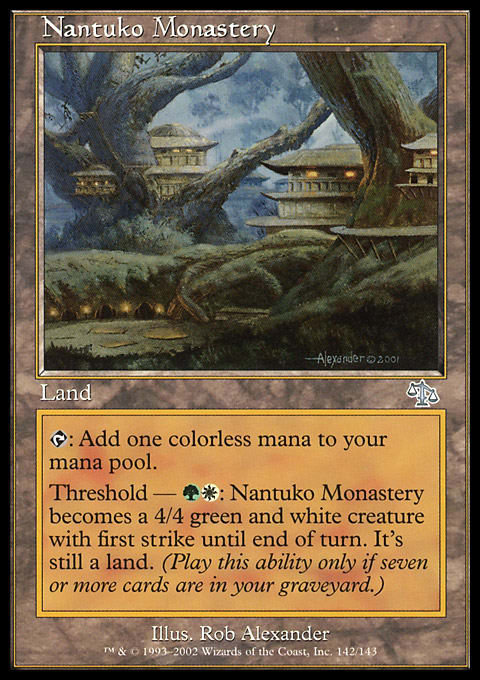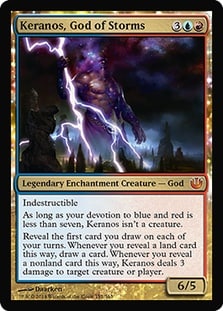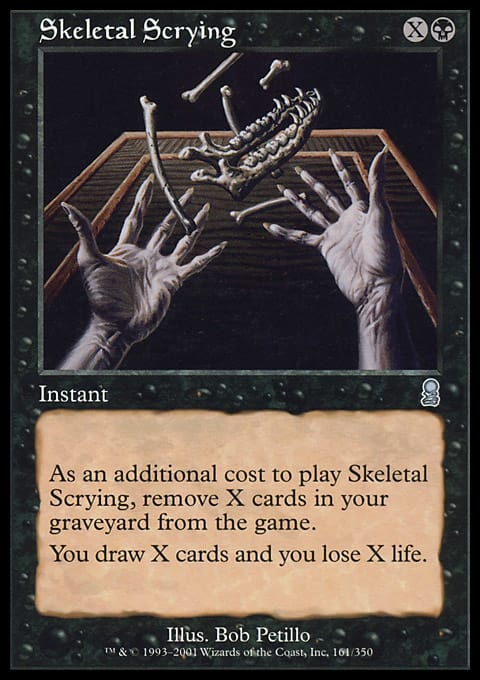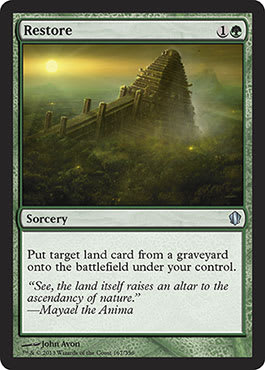It’s been too long.
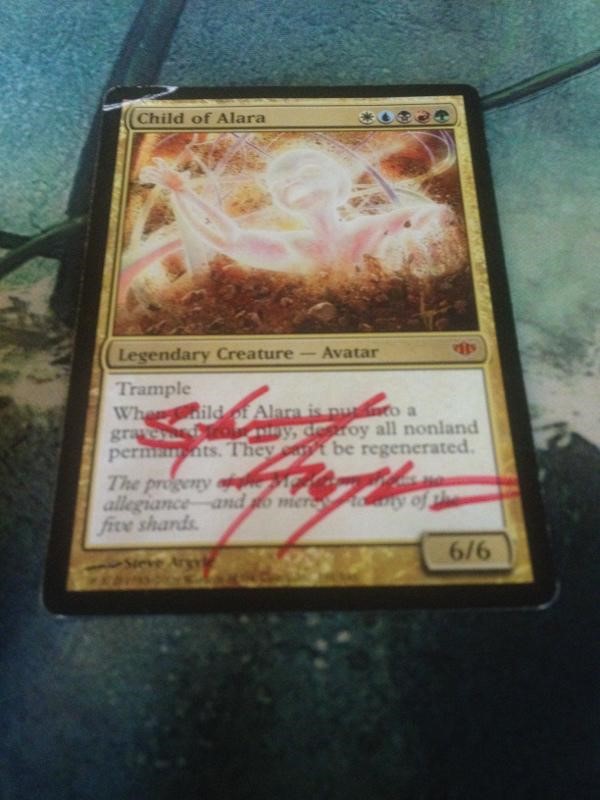
This is the Child that started it all. I cracked it in a Conflux prerelease Sealed pool and built an impromptu deck around it out of scraps from Draft decks and trade binders out of necessity. Almost six years later, it’s the deck I’m best known for, the one people ask to play against at big events and take to social media to ask about. It’s the one that got me involved in Commandercast and writing.
It’s been almost two years since I last messed with my Child deck. There were plenty of reasons: fewer opportunities to play, fewer exciting additions, and increasing stigma against the deck, to name a few. The deck gets hated on a lot—and for good reason. It’s overbearing, tries to foil all attempts to interact with its engine, and is glacially slow at actually closing games out.
Two weeks ago, I dragged my better half up to Grand Prix Boston–Worcester. In the week leading up to the event, Andrew Magrini demanded that we have a Damia Lands versus Child Lands face-off at the event. That meant that it was time to bring the deck up to date through Magic 2015, find some fun new cards to experiment with, and get my awesome gifts from my better half ready to show off the Child with an explosive attitude:
 |
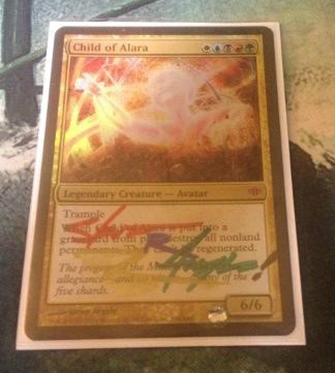 |
| Who can be mad being beaten down by the Coca-Cola bear? | |
So much has changed, but everything is still the same. This weekend, I learned that the deck is just as powerful and potentially degenerate as it always was. It’s also an absolute blast to play and my favorite Commander deck, stigma and all. Even if it’s 0–2 against Adam the last few times we’ve played, it’s a deck I’m excited to start playing with again.
[Cardlist title=Child Lands ? Commander | Carlos Gutierrez]
- Commander (0)
- Lands (56)
- 1 Misty Rainforest
- 1 Arid Mesa
- 1 Scalding Tarn
- 1 Verdant Catacombs
- 1 Marsh Flats
- 1 Flooded Strand
- 1 Polluted Delta
- 1 Wooded Foothills
- 1 Windswept Heath
- 1 Breeding Pool
- 1 Sacred Foundry
- 1 Steam Vents
- 1 Overgrown Tomb
- 1 Godless Shrine
- 1 Hallowed Fountain
- 1 Watery Grave
- 1 Stomping Ground
- 1 Temple Garden
- 1 Tropical Island
- 1 Plateau
- 1 Volcanic Island
- 1 Bayou
- 1 Scrubland
- 1 Tundra
- 1 Underground Sea
- 1 Taiga
- 1 Savannah
- 1 Plains
- 1 Emeria, the Sky Ruin
- 1 Glimmerpost
- 1 Dark Depths
- 1 Secluded Steppe
- 1 The Tabernacle at Pendrell Vale
- 1 Tolaria West
- 1 Temple of Mystery
- 1 Cloudpost
- 1 Krosan Verge
- 1 Diamond Valley
- 1 Cephalid Coliseum
- 1 Petrified Field
- 1 High Market
- 1 Glacial Chasm
- 1 Volrath's Stronghold
- 1 Vesuva
- 1 Deserted Temple
- 1 Bojuka Bog
- 1 Slayers' Stronghold
- 1 Buried Ruin
- 1 Nantuko Monastery
- 1 Cavern of Souls
- 1 Maze of Ith
- 1 Tranquil Thicket
- 1 Strip Mine
- 1 Kor Haven
- 1 Dryad Arbor
- 1 Thespian's Stage
- Creatures (13)
- 1 Snapcaster Mage
- 1 Dark Confidant
- 1 Phantasmal Image
- 1 Azusa, Lost but Seeking
- 1 Athreos, God of Passage
- 1 Drift of Phantasms
- 1 Tilling Treefolk
- 1 Eternal Witness
- 1 Knight of the Reliquary
- 1 Oracle of Mul Daya
- 1 Meloku the Clouded Mirror
- 1 Genesis
- 1 Sun Titan
- Spells (27)
- 1 Zuran Orb
- 1 Exploration
- 1 Sensei's Divining Top
- 1 Crop Rotation
- 1 Brainstorm
- 1 Entomb
- 1 Manabond
- 1 Gamble
- 1 Vampiric Tutor
- 1 Enlightened Tutor
- 1 Life from the Loam
- 1 Treasure Hunt
- 1 Demonic Tutor
- 1 Nim Deathmantle
- 1 Sylvan Library
- 1 Summer Bloom
- 1 Oblivion Stone
- 1 Druidic Satchel
- 1 Realms Uncharted
- 1 Intuition
- 1 Sword of Feast and Famine
- 1 Crucible of Worlds
- 1 Wargate
- 1 Yawgmoth's Will
- 1 Birthing Pod
- 1 Faith's Reward
- 1 Ad Nauseam
- Planeswalkers (3)
- 1 Liliana of the Veil
- 1 Jace, the Mind Sculptor
- 1 Kiora, the Crashing Wave
So What Does It Do?
So what’s the plan? Early on, you’re just looking to ramp and set up a graveyard engine. Summer Bloom, Exploration, and Azusa, Lost but Seeking let you cheat extra lands into play. You almost always want to tutor for Life from the Loam first so you can abuse those extra land drops. Your first priority is to make sure you can cast Child of Alara early enough to stabilize the board. Your second priority is to fetch Plains dual lands to power up your Emeria, The Sky Ruin as the game goes long.
Your second tutor is almost always for Diamond Valley or Tolaria West so that you can start really taking control of the game. Once you Wrath the board once, you’ve usually bought enough time to set up another sweeper. After that, you just start pillow-forting with Maze of Ith and Glacial Chasm. Your goal at that point of the game is to be able to Wrath as often as necessary and hold up multiple ways to protect yourself from disruption. The power of this deck is in the redundancy of key pieces and the multitude of recursion engines. Most decks play very few ways to interact with lands, but your goal is to make sure you’re never vulnerable by copying key lands such as Emeria or Glacial Chasm with Vesuva and Thespian's Stage.
Eventually, you can start applying pressure with Bojuka Bog exiling key pieces of opponents’ decks, the combo of Dark Depths and Thespian's Stage giving you a 20/20 that lives through your Wraths, or just Slayers' Stronghold giving your Child, Sun Titan, or Knight of the Reliquary haste when you recur them with Emeria.
The most fun part of this deck is finding the cute interactions that give you small edges. Almost every time I play, I find something new and exciting to do. Using Emeria to rebuy Dryad Arbor gives you continuous sacrifice fodder for Knight of the Reliquary and Glacial Chasm. Zuran Orb plus Faith's Reward is a super ritual on turns when you need a ton of mana, and the combo also gives you a way to reset utility lands such as Diamond Valley or Bojuka Bog at instant speed.
What Pieces Have Changed?
The last big set of changes happened when Primeval Titan was banned and Kokusho, the Evening Star was unbanned. Primeval Titan did everything this deck could possibly have asked for: ramping plus tutoring for key utility lands. The deck is certainly less powerful now than it was with Primeval Titan in the mix, but it’s become a lot more focused and flexible. When you don’t have one card that does everything, you have to start really thinking about what’s important. For this deck, Primeval Titan represented ramp, consistency, and a mechanism of ending the game. It’s been difficult to replace all of those effects, but I think this list does a reasonable job with the combination of Krosan Verge, Kiora, the Crashing Wave, and Druidic Satchel.
Kokusho made a brief appearance as a finisher, but it was quickly cut for Dark Depths. The problem with Kokusho is that the life just isn’t that important when you’re locking the game down with Glacial Chasm. You rarely need to gain more than 6 or so life in a turn cycle, and even if you do, Knight of the Reliquary and Marit Lage are enormous enough to give you the life buffer you need.
Slayers' Stronghold has made most other win conditions completely unnecessary. Being able to sweep the board every turn and still attack with hasty creatures makes it much safer to go aggressive and close out games. This also lets you gain additional triggers from Sun Titan and turns Child into a three-turn clock instead of a four-turn clock. All of that for effectively 3 mana? I’m sold.
Athreos, God of Passage is just dumb in this deck. It’s indestructible, so it is able to hang out for most of the game, and it triggers whenever you sacrifice Child or kill any of your other creatures. That puts opponents in the awkward spot of either giving you back your value creatures or giving you a win condition that doesn’t require attacking.
Finally, Faith's Reward has made the cut as a way to do lots of tricky things. First, you can rebuy your entire board, Planeswalkers and all, after Wrathing the board. Second, you can protect yourself from land destruction or graveyard hate on key spells. Third, Faith's Reward combos with sacrifice outlets such as Diamond Valley and Zuran Orb to give you a meaningful way of interacting at instant speed besides Nim Deathmantle and sacrificing Child of Alara.
What’s Next?
This weekend, I realized that the real reason I stopped playing this deck is that I stopped learning. For me, Magic is all about trying new things and finding out what’s good, bad, or absurd. When I started thinking that this deck was finished, I stopped wanting to play it because there wasn’t new space to explore. Even small changes force you to try new things and give you the opportunity to learn from each game. Staying engaged in the evolution of a deck is important because that’s how awesome new Commander technology is born. With that in mind, I want to identify some underperformers who might not make it to the next Grand Prix and rundown a few cards I want to try in the future.
The Chopping Block:
With some help from Andrew Magrinin and Sean Patchen, these are a few cards that I’ve identified as not good enough for the 2014 build of Child of Alara. Most of them used to have specific roles to play, but they have stopped really performing in most of my more recent games:
Cloudpost and Glimmerpost – Originally, these provided a cute way to pay for expensive turns and have access to reliable life-gain besides Diamond Valley. These are fine, but not exciting, slots.
Nantuko Monastery – Man lands have become increasingly less important as the deck has continued to evolve. This is the most efficient one, but it rarely gets activated, and a 4/4 first strike is not really a good rattlesnake effect.
Dark Confidant – This is super-efficient, but it’s very fragile and low-impact. The body rarely matters, and there are more efficient ways of generating a ton of cards. Ephara, God of the Polis plus Emeria or any number of other engines might be worth trying instead.
Enlightened Tutor – In theory, this is a tutor for Exploration, Manabond, and Nim Deathmantle. Realistically, I’d rather be tutoring for lands.
Sword of Feast and Famine – Gaining additional uses out of lands such as Diamond Valley and Thespian's Stage can be very powerful, but it generally requires you to already have an overwhelming advantage on board. Swords don’t really help you take control of the game, and I’m not convinced that this deck needs the extra mana.
Steam Vents and Stomping Ground – I don’t need very much red mana, so I think four duals should be plenty. Sacred Foundry has to stay because of Emeria, the Sky Ruin, but I never fetch these out, so they can probably be something better.
The New Guys
That gives me eight slots to work with, which is incredibly exciting. I can’t remember the last time I had eight whole cards to play around with in this deck. Here’s what I’m starting with:
Temple of Deceit – Temple of Mystery has been fantastic, and this is the color pair I want next. Maybe it’s too many tap lands, but I’m optimistic.
Phyrexian Tower – More sacrifice outlets are good. The other option is Miren, the Moaning Well, but “free” sacrifice effects are generally better. This one’s even a mana ability! Take that, Wipe Away and Word of Seizing!
Erebos, God of the Dead or Keranos, God of Storms – It turns out that indestructible card-advantage engines are okay in a deck that sweeps the board all the time. I’m not sure which of these is better, but I’m inclined to think that a mana sink is good in a land-based deck.
Journey of Discovery – This deck’s most busted draws tend to involve Summer Bloom. This is no Summer Bloom, but it’s close, and it’s already earning its keep. In the very first game I was able to cast it, the entwine let me find my singleton basic to exactly reach seven Plains for Emeria on a critical turn.
Rix Maadi, Dungeon Palace – Is this better than Liliana of the Veil? This deck has trouble against spells, and this seems to be a good way to attack the spell-based control decks.
Skeletal Scrying – Ad Nauseam is among the best card-drawers in this deck, and Skeletal Scrying seems to be a pretty close second. Promise of Power may just be better.
Jace Beleren – Here’s a direct sub for Dark Confidant. Drawing cards immediately is awesome, and the synergy with Sun Titan is one of my favorites. It’s a pure upgrade as far as I’m concerned.
Expedition Map – Primeval Titan made this unnecessary before. Now all I want are more Tolaria Wests. This is a permanent and colorless, which gives it the nod over Sylvan Scrying for now.
Additionally, here’s a not-so-short list of cards that I want to find opportunities to try sometime in the future. As I’m sure you can see, there’s a lot going on here, with plenty of weird interactions and applications that can combine in strange and interesting ways. The future of this deck is uncertain for the first time in quite a while, and I couldn’t be happier.
- Diabolic Intent
- Creeping Tar Pit
- Mosswort Bridge
- Restore
- Avenger of Zendikar
- Soul of Ravnica
- Vault of the Archangel
- Desperate Ravings
- Nissa, Worldwaker
- Fact or Fiction
- Urborg, Tomb of Yawgmoth
- Ill-Gotten Gains
- Disciple of Bolas
- Alchemist's Refuge
Wrapping Up
So, changes have been made, and the deck feels smoother, more powerful, and more consistent. There’s less stumbling over missing colors and sacrifice outlets, and it’s more capable of getting the Emeria engine running early in the game instead of starting to take over on turn ten. I’m pretty happy with the deck as it stands even though it’s still the same degenerate, overbearing monstrosity that it’s always been at the Commander table. Sometimes, it’s okay to be the archenemy—games can be more fun when there’s a villain that players have to team up against.
For those tracking the changes, here’s the list as it stands now. This style of deck is a blast to build and play, and I know it’s become increasingly popular as the years have gone by. If you have questions, comments, ideas, or your own build, I’m excited to have more conversations about where this archetype is headed next.
[Cardlist title=Child Lands ? Commander | Carlos Gutierrez]
- Commander (0)
- Lands (54)
- 1 Misty Rainforest
- 1 Arid Mesa
- 1 Scalding Tarn
- 1 Verdant Catacombs
- 1 Marsh Flats
- 1 Flooded Strand
- 1 Polluted Delta
- 1 Wooded Foothills
- 1 Windswept Heath
- 1 Breeding Pool
- 1 Sacred Foundry
- 1 Overgrown Tomb
- 1 Godless Shrine
- 1 Hallowed Fountain
- 1 Watery Grave
- 1 Temple Garden
- 1 Tropical Island
- 1 Plateau
- 1 Volcanic Island
- 1 Bayou
- 1 Scrubland
- 1 Tundra
- 1 Underground Sea
- 1 Taiga
- 1 Savannah
- 1 Plains
- 1 Emeria, the Sky Ruin
- 1 Dark Depths
- 1 Secluded Steppe
- 1 Phyrexian Tower
- 1 Rix Maadi, Dungeon Palace
- 1 Temple of Deceit
- 1 The Tabernacle at Pendrell Vale
- 1 Tolaria West
- 1 Temple of Mystery
- 1 Krosan Verge
- 1 Diamond Valley
- 1 Cephalid Coliseum
- 1 Petrified Field
- 1 High Market
- 1 Glacial Chasm
- 1 Volrath's Stronghold
- 1 Vesuva
- 1 Deserted Temple
- 1 Bojuka Bog
- 1 Slayers' Stronghold
- 1 Buried Ruin
- 1 Cavern of Souls
- 1 Maze of Ith
- 1 Tranquil Thicket
- 1 Strip Mine
- 1 Kor Haven
- 1 Dryad Arbor
- 1 Thespian's Stage
- Creatures (13)
- 1 Snapcaster Mage
- 1 Phantasmal Image
- 1 Azusa, Lost but Seeking
- 1 Athreos, God of Passage
- 1 Drift of Phantasms
- 1 Tilling Treefolk
- 1 Eternal Witness
- 1 Knight of the Reliquary
- 1 Oracle of Mul Daya
- 1 Erebos, God of the Dead
- 1 Meloku the Clouded Mirror
- 1 Genesis
- 1 Sun Titan
- Spells (29)
- 1 Zuran Orb
- 1 Exploration
- 1 Sensei's Divining Top
- 1 Expedition Map
- 1 Crop Rotation
- 1 Brainstorm
- 1 Entomb
- 1 Manabond
- 1 Gamble
- 1 Vampiric Tutor
- 1 Skeletal Scrying
- 1 Life from the Loam
- 1 Treasure Hunt
- 1 Demonic Tutor
- 1 Nim Deathmantle
- 1 Sylvan Library
- 1 Summer Bloom
- 1 Oblivion Stone
- 1 Druidic Satchel
- 1 Jace Beleren
- 1 Journey of Discovery
- 1 Realms Uncharted
- 1 Intuition
- 1 Crucible of Worlds
- 1 Wargate
- 1 Yawgmoth's Will
- 1 Birthing Pod
- 1 Faith's Reward
- 1 Ad Nauseam
- Planeswalkers (3)
- 1 Liliana of the Veil
- 1 Jace, the Mind Sculptor
- 1 Kiora, the Crashing Wave
Whispers of the Muse
- How many Precursor Golems can Muzzio, Visionary Architect put into play? Is “too many Golems to count” an alternate win condition?
- Riku of Two Reflections plus Summer Bloom/Journey of Discovery. Because what’s more fun than Turboland?
- How good is Liquimetal Coating at sniping problematic permanents and Commanders with Shattergang Brothers?
















